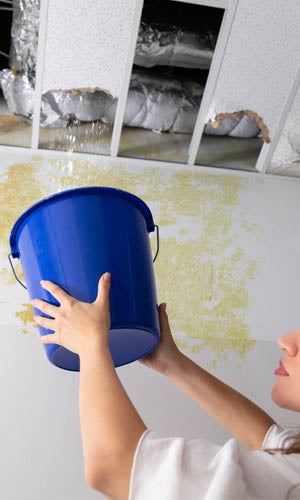Listed here down the page you can find more excellent answers regarding Top leak detection hacks.

Early discovery of leaking water lines can minimize a possible calamity. Some tiny water leaks might not be visible.
1. Take A Look At the Water Meter
Every house has a water meter. Checking it is a proven way that assists you find leaks. For starters, switch off all the water sources. Make certain nobody will certainly flush, make use of the faucet, shower, run the washing device or dishwashing machine. From there, go to the meter and watch if it will certainly alter. Considering that nobody is using it, there must be no movements. That suggests a fast-moving leak if it relocates. If you discover no adjustments, wait an hour or 2 and examine back once again. This implies you may have a sluggish leakage that can even be below ground.
2. Inspect Water Intake
Evaluate your water costs and track your water consumption. As the one paying it, you ought to observe if there are any type of discrepancies. If you identify sudden changes, regardless of your usage being the same, it indicates that you have leakages in your plumbing system. Bear in mind, your water costs should fall under the same range every month. A sudden spike in your bill indicates a fast-moving leakage.
A consistent increase every month, also with the same behaviors, shows you have a slow-moving leak that's likewise gradually escalating. Call a plumber to completely examine your property, particularly if you really feel a cozy area on your floor with piping beneath.
3. Do a Food Coloring Test
When it comes to water consumption, 30% comes from bathrooms. If the shade somehow infiltrates your dish throughout that time without flushing, there's a leak between the container and bowl.
4. Asses Exterior Lines
Don't neglect to inspect your exterior water lines too. Ought to water permeate out of the link, you have a loosened rubber gasket. One tiny leakage can throw away heaps of water and also increase your water bill.
5. Check as well as Assess the Scenario
House owners must make it a routine to inspect under the sink counters and also inside cupboards for any bad odor or mold and mildew growth. These 2 warnings indicate a leakage so prompt focus is needed. Doing regular assessments, even bi-annually, can conserve you from a significant issue.
Inspect for stainings and deteriorating as most pipes as well as devices have a life expectations. If you suspect leaking water lines in your plumbing system, do not wait for it to escalate.
Early discovery of leaking water lines can alleviate a potential catastrophe. Some tiny water leaks might not be noticeable. Checking it is a proven way that helps you uncover leakages. One tiny leak can lose tons of water and surge your water expense.
If you believe dripping water lines in your plumbing system, don't wait for it to escalate.
How to Know If Your Home Has a Hidden Leak
Water Meter Reveals Inexplicable Water Usage
If you’d like to test whether or not there’s a leak somewhere in your home, you can do this using your water meter. Here is how to conduct the test:
Don’t use any water in your home for at least 30 minutes; this also means not turning on faucets or water-using appliances.
Go outside, and check your water meter for activity.
If your water meter shows that there was activity, even though no one was using any water, this proves that there is a leak in your home.Visible Mold or Mildew Growth
Leaks behind walls create moist, dark environments that allow mold and mildew to grow and thrive. Eventually, you might see mold growth forming on the wall closest to a hidden leak.
If mold is growing in an area that receives a high amount of moisture, such as a bathroom, it may simply be an indication that better ventilation is needed. However, if you see mold growth on a wall or the ceiling in an area where you would not expect, you probably have a hidden leak.
Musty, Mildew Odor
Sometimes you might not be able to see the mold or mildew that is growing as a result of a leak. However, the smell can give the problem away just as easily. If you catch a whiff of something musty, there’s a good chance that old water is collecting somewhere in your home that you can’t see.
Stained/Warped Walls, Ceilings, or Floors
When your home soaks up water, a variety of red flags can become visible, including ceiling stains, bubbling drywall, warped walls, and sagging floors. While these issues can be caused by excess humidity, they can also be signs that a pipe or plumbing connection has started leaking behind your walls.
Inexplicably High Water Bill
After a while, you get a general sense for what your water bill should be. If you own a pool or sprinkler system, your bill will tend to be higher during summer. However, if you receive a water bill that seems especially high, and you can’t figure out what caused it, then you may have a hidden leak somewhere that’s increasing your bill.
https://www.plumbingjoint.com/blog/2019/july/how-to-know-if-your-home-has-a-hidden-leak/

I am just very inquisitive about Locating water leaks and I'm hoping you liked the new piece. Sharing is caring. You never know, you could be helping someone out. I praise you for your time. Visit us again soon.